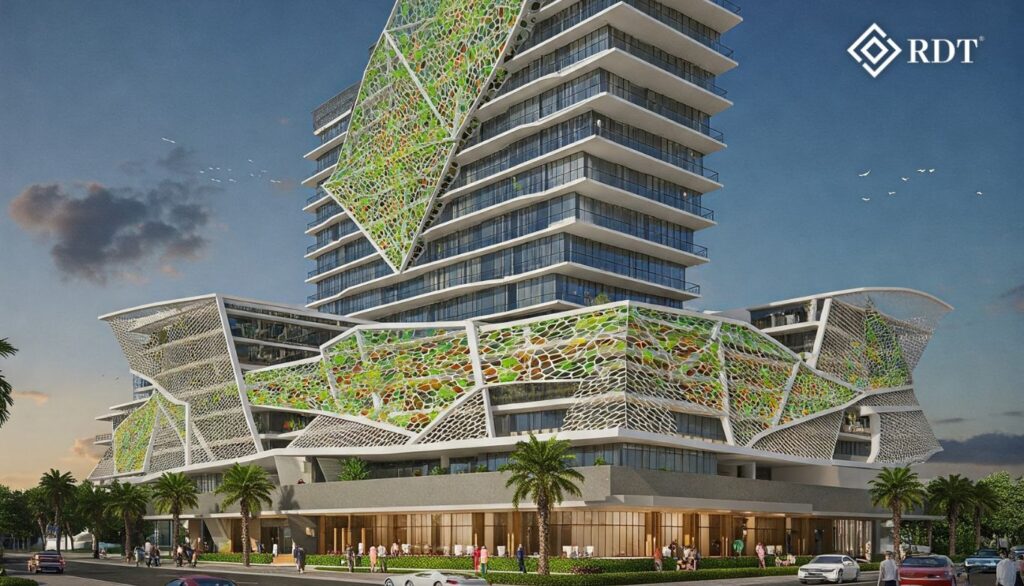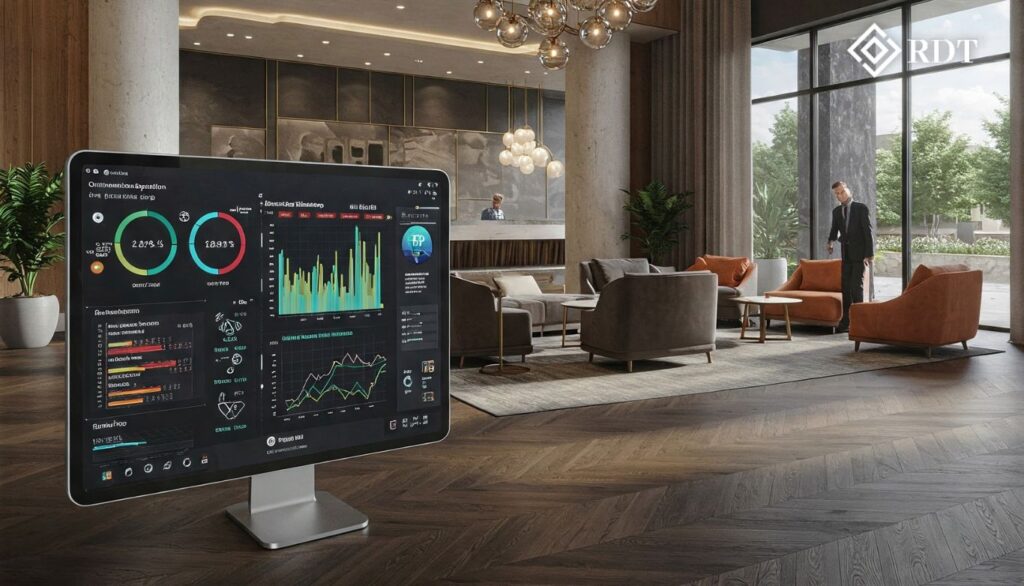The hospitality industry stands at the convergence of advanced technological capabilities and heightened guest expectations. As luxury hotels, resorts, and mixed-use developments continue to compete, design innovation is no longer simply aesthetic — it is an orchestrated interplay of parametric algorithms, real-time data analytics, and multi-dimensional simulations.
For enterprise-level architects, engineers, and developers, the use of Building Information Modeling (BIM) and Digital Twins has become the cornerstone of operational excellence. AI-powered predictive modeling and computational design techniques are now essential for optimizing space utilization, sustainability, and guest-centric experiences.
This blog delves into the latest trends in hospitality design, highlighting how architects can redefine luxury, efficiency, and sustainability using advanced BIM solutions.
1. Parametric and Generative Design for Bespoke Experiences

Parametric modeling tools like Grasshopper for Rhino and Dynamo for Revit have shifted design thinking from linear to algorithmic. For luxury resorts and high-end hotels, parametric design algorithms allow architects to simulate and generate thousands of variations in milliseconds.
Multi-Objective Optimization (MOO)
- Architects can input key constraints such as views, solar exposure, circulation patterns, and energy consumption into the parametric system.
- AI-augmented MOO algorithms use evolutionary computations to select optimal configurations, achieving desired architectural forms and energy efficiency.
- Resulting outputs are directly integrated with BIM, ensuring design intent is reflected in real-time clash detection and construction sequencing.
Computational Façade Design
- Custom façades are generated using machine learning algorithms that analyze environmental data.
- Materials are assigned using Life Cycle Assessment (LCA) data embedded into the BIM model, considering embodied carbon, thermal resistance, and maintenance cycles.
- Kinetic façades employing smart glass with AI-controlled tinting optimize daylight ingress and heat gain.
Architects can iterate toward hyper-personalized, site-responsive hospitality designs that deliver unparalleled guest experiences.
2. Digital Twin Integration for Real-Time Operational Insights

Digital Twins serve as living replicas of physical hospitality spaces, continuously synchronized with real-time IoT sensor data. These virtual models provide architects, operators, and facilities managers with unprecedented visibilityinto hotel operations.
Predictive Maintenance and Asset Management
- AI-powered anomaly detection algorithms predict failures in MEP (Mechanical, Electrical, and Plumbing)systems using historical and live data.
- BIM-embedded sensors track HVAC performance, water consumption, and guest occupancy, automatically flagging deviations.
- Maintenance schedules are dynamically generated through machine learning predictions, reducing downtime and operational costs.
Guest Experience Optimization
- RTLS (Real-Time Location Systems) analyze guest movement patterns, optimizing layout designs for peak occupancy.
- AI algorithms recommend personalized environmental adjustments based on occupancy levels, adjusting lighting, HVAC, and acoustics in real-time.
- Predictive Space Utilization suggests underused or over-occupied areas, guiding operators on spatial reconfiguration.
Operators can achieve real-time operational intelligence, significantly enhancing guest satisfaction and resource management.
3. AI-Driven Space Planning and Layout Optimization
AI algorithms are increasingly instrumental in creating hyper-efficient hospitality spaces. From front-of-house areas to back-of-house operations, AI interprets vast datasets to recommend spatial optimizations.
Behavioral Simulation Algorithms
- Agent-Based Models (ABMs) simulate real-world guest interactions within hotel environments. Factors such as wait times, accessibility, and safety compliance are iteratively optimized.
- Architects adjust lobby layouts and amenity spaces based on real-time predictive feedback.
- AI-informed Wayfinding Systems provide adaptive navigation for guests, utilizing Digital Twins for seamless path optimization.
Dynamic Space Allocation
- Hotels leverage AI-powered dynamic zoning to convert underused conference rooms into event spaces or transform dining areas into co-working lounges.
- BIM-integrated sensors track space utilization, sending occupancy data to centralized management platforms for real-time decision-making.
- Custom configurations are suggested using machine learning algorithms, maximizing revenue-generating areas.
Hospitality operators can achieve both guest satisfaction and operational agility.
4. 5D BIM for Budget and Construction Management

5D BIM is transforming how architects and contractors manage large-scale hospitality projects by integrating cost estimation and construction scheduling into the design process.
AI-Powered Budget Estimations
- Real-time cost data is pulled from historical projects, material databases, and supplier APIs.
- AI algorithms adjust design iterations to remain within budget, offering alternatives in material selection, construction techniques, and procurement strategies.
- Construction simulations provide predictive budget forecasting, mitigating risk and ensuring cost predictability.
Construction Phasing with 4D BIM
- Through 4D BIM simulations, construction schedules are generated to optimize labor allocation, crane logistics, and material staging.
- Real-time updates from IoT sensors and drones are fed back into the Digital Twin, enhancing on-site visibility and resolving delays proactively.
Architects and project managers can deliver hospitality projects on time and within budget, minimizing costly overruns.
5. Sustainability-Driven Design and Energy Modeling
Sustainability remains a key priority for hospitality enterprises. Advanced EnergyPlus and CFD simulations integrated with BIM platforms provide precise energy performance predictions.
Zero-Carbon Hospitality Design
- AI-driven energy models simulate building energy consumption under various scenarios, optimizing material selection and MEP configurations.
- Renewable energy feasibility is analyzed using solar radiation simulations and wind flow studies.
- Energy Storage Optimization Algorithms recommend battery systems for energy resilience during peak loads.
Smart Water Management
- Advanced BIM simulations predict water demand patterns, reducing wastage and identifying potential leaks.
- On-site greywater recycling systems are modeled to optimize reuse efficiency, particularly in remote luxury resorts.
Material Circularity Tracking
- BIM-linked LCA modules track material circularity across the lifecycle, ensuring sustainable procurement, usage, and end-of-life decommissioning.
- AI algorithms recommend suppliers adhering to carbon-neutral and ethical sourcing standards.
Architects can ensure compliance with stringent sustainability goals while delivering luxury hospitality experiences.
Conclusion
The future of hospitality design is defined by technological sophistication. By harnessing the power of AI-powered generative design, BIM-integrated Digital Twins, and predictive operational intelligence, enterprise architects and developers are creating adaptive, guest-centric, and sustainable hotel spaces.
These advanced solutions unlock unprecedented levels of operational efficiency and guest satisfaction.





